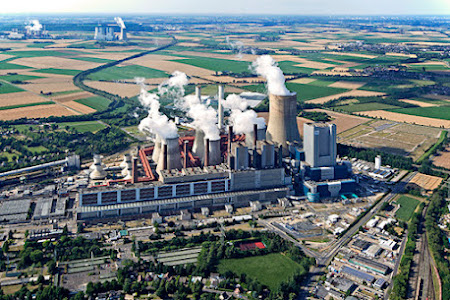To fertilize post-mining soil, organic matter or compost is important and much needed. Land or post-mining land is damaged with a very low fertility level so it needs to be processed (treatment) first before it can be planted. The choice of plants depends on the purpose of using the post-mining land, whether for agriculture, forestry or others. Planting fast growing trees and short rotation coppice i.e. legume group trees is the best option. In addition to the ability to survive, its deep roots are also able to withstand erosion and the ability to symbiotic with azetobacter so that it binds nitrogen in root nodules so that it fertilizes the soil. And furthermore, the legume tree can be used as a source of animal feed (the leaves), bioenergy (the wood) and honey (the flowers).
The creation of livestock and their supporters such as forage plantations is like an ammunition factory to reclaim the post-mining land. The wider and faster the target time for reclaiming the land, the larger the farm required. Ruminant farms with thousands or even tens of thousands of livestock can be made with this purpose. Although the main objective is to produce compost for post-mining land reclamation, the indirect benefits from the farm are no less large. Even from the farm business can get big financial benefits. The main and common problem faced by mining entrepreneurs is that they are reluctant to do reclamation because it costs a lot and does not provide financial benefits. But when the reclamation activity does not reduce the company's finances even provide large profit, of course it will be a different story. The volume of mining carried out should also be proportional to the repair or post-mining reclamation.
To maximize the reclamation, biochar needs to be used. The use of biochar will make compost in post-mining land not easily lost after being washed by rain, maintain soil moisture because biochar is able to hold water (water holding capacity), raise soil pH so that soil microbial activity is more optimal and more nutrients are absorbed by plants, and biochar also will become a home or colony for soil microbes so that it will further fertilize the soil. Meanwhile, in terms of climate change mitigation, the use of biochar in the soil will also store carbon (carbon sequestration) for a very long time, up to hundreds of years. Carbon credits with a carbon sink mechanism as part of the CCS (carbon capture and storage) application can also be obtained. The carbon trading market is predicted to get bigger as global awareness of climate change and biochar as one of the solutions are also increasingly being applied, discussed and paid attention to by the earth's population.
The extent of post-mining land that reaches millions of hectares, the high demand for domestic meat as well as the export market, and the large amount of biomass waste that can be converted into biochar, post-mining reclamation should be a priority for mining entrepreneurs moreover, the reclamation activity does not reduce the company's profit but instead gives more profits. If this can be done, the environmental damage caused by mining can be minimized. Indeed, humans need various products that come from the mining to make their lives easier, but also not to the point that on the other hand the mining business actually damages the environment which will lead to disasters in the future.

















